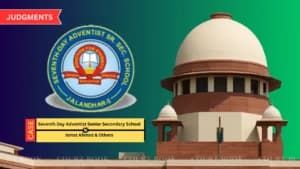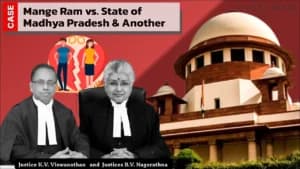In a significant judgment, the Supreme Court recently acquitted a college student named Vaibhav in a 2010 murder case in which his friend Mangesh was killed. The verdict came after the court found that the prosecution failed to produce a full and convincing chain of circumstantial evidence to justify the conviction.
The case involved a tragic incident in which Mangesh, a first-year student at Bagla Homoeopathy Medical College, was found dead after Vaibhav went home. The prosecution had claimed that Vaibhav shot Mangesh with his father's licensed service pistol. However, Vaibhav argued that Mangesh accidentally shot himself while handling the weapon.
"The suspicion must have been substantiated by undisputed, credible, clear, consistent and reliable circumstantial evidence, which does not leave the possibility of any other theory." - Supreme Court
The trial and the High Court had convicted Vaibhav under Sections 302 and 201 read with Section 34 of the IPC and also under the Arms Act. These courts relied heavily on Vaibhav's conduct after the incident—such as removing the body, cleaning the blood-stained floor and visiting Mangesh's house to inquire about his well-being.
However, the Supreme Court bench of Justices BV Nagarathna and SC Sharma rejected these convictions, and said that such conduct after the incident cannot in itself prove guilt. The court clarified that the prosecution did not prove a crucial fact—who pulled the trigger.
"The inability of the appellant to explain certain circumstances cannot be made a ground to absolve the prosecution of its primary onus." - Supreme Court
The court emphasised that the conduct, though questionable and legally punishable, may have been caused by panic. Vaibhav, a young student with no criminal record or motive, may have done so out of fear after witnessing the accidental shooting.
Read also: Kapil Sibal raises concern over delay in action on impeachment motion against Justice Shekhar Yadav
"That his act of removing the body and hiding the belongings was a result of his fear of his father—it is quite natural." - Supreme Court
Moreover, forensic evidence supported Vaibhav's version. The trajectory of the bullet and the injury pattern matched with accidental firing, and no concrete motive was established by the prosecution.
"The complete absence of motive, though not conclusive, is a relevant factor which weighs in favour of the accused." - Supreme Court
While acquitting Vaibhav of charges under Section 302 of the IPC and the Arms Act, the court upheld his conviction under Section 201 of the IPC for causing disappearance of evidence. However, it reduced his sentence to the period already served.
Case Title: VAIBHAV VERSUS THE STATE OF MAHARASHTRA
Appearance:
For Appellant(s) Mr. Vipin Sanghi, Sr. Adv. Mr. Satyajit A. Desai, Adv. Mr. Siddharth Gautam, Adv. Mr. Ananya Thapliyal, Adv. Mr. Abhinav K. Mutyalwar, Adv. Mr. Sachin Singh, Adv. Ms. Anagha S. Desai, AOR
For Respondent(s) Mr. Aaditya Aniruddha Pande, AOR Mr. Siddharth Dharmadhikari, Adv. Mr. Bharat Bagla, Adv. Mr. Sourav Singh, Adv. Mr. Aditya Krishna, Adv. Mr. Adarsh Dubey, Adv.










